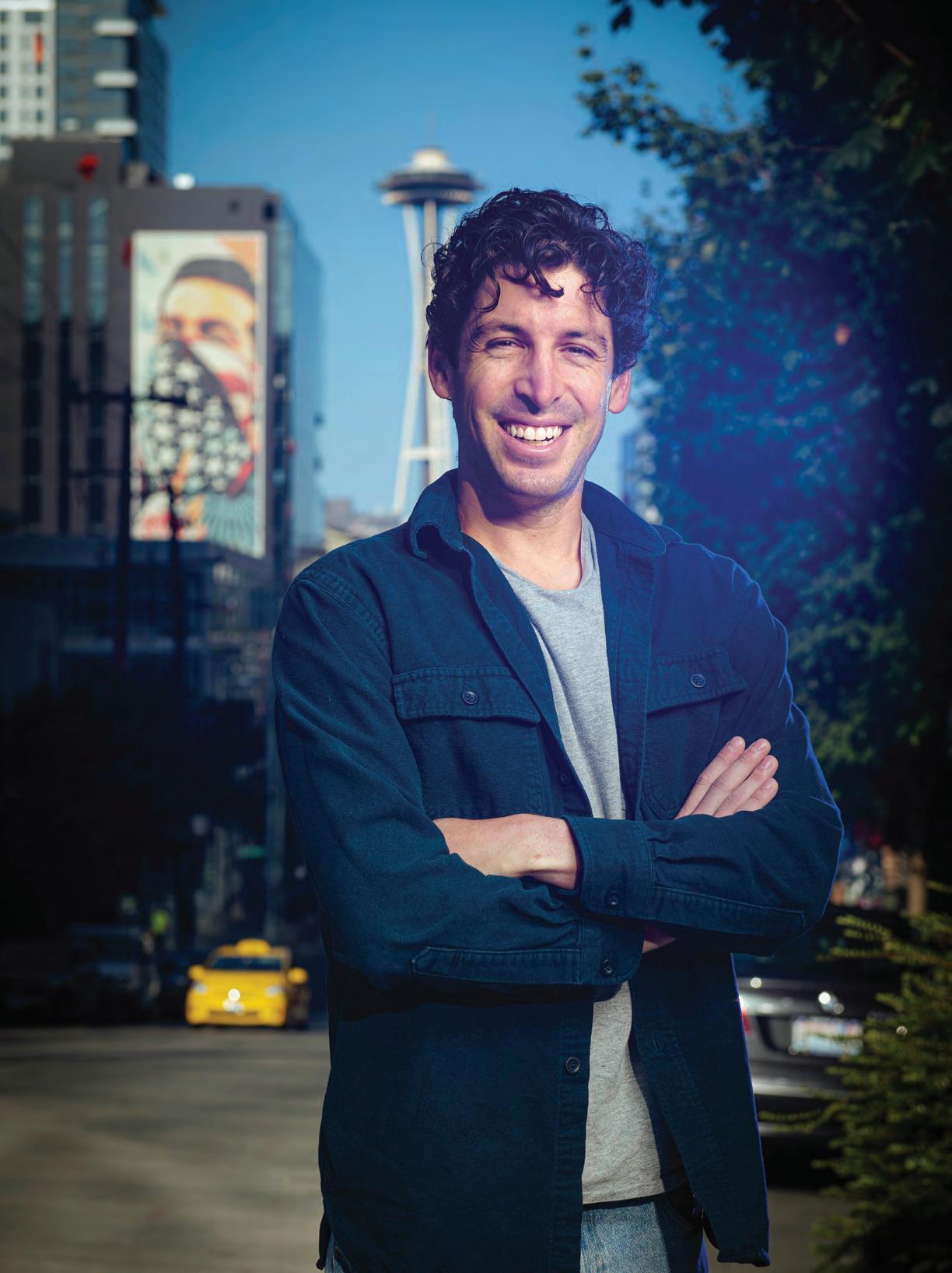
3 minute read
DRIVEN TO ENGINEER
DRIVEN TO
ENGINEER After five years at SpaceX, Matthew Kahane ’08 is helping design Cruise’s fleet of self-driving electric cars, hoping to transform our wasteful transportation habits—BY MATTHEW LIEBOWITZ
atthew Kahane ’08 has a career that’s speeding ahead, although, in his work, nobody’s behind the wheel.
Last February, the Westhampton, Massachusetts, native took a position as a senior embedded systems engineer for Cruise, a San Francisco-based company whose autonomous electric vehicles are shaking up both the self-driving and ride-sharing businesses, while trying to save lives and help the environment in the process.
Kahane has been with Cruise less than a year, but the five years he spent at his previous firm, SpaceX (after earning undergraduate and graduate degrees in electrical engineering from Stanford), inform the work he does now. Not just because the company was at the forefront of technological innovation, but also because he had to commute 45 minutes to get there.
“I couldn’t help thinking that the time spent in my car was the most useless,” Kahane, 31, said. “Driving is such a waste. It’s tiring, it’s dangerous, you don’t learn anything, you’re just putting yourself in danger.” Stated more bluntly, by someone working to make roads safer by eliminating human error: “There’s no way humans should be involved in the operating of machinery that moves that fast. It shouldn’t happen.”
And while jargon often obfuscates the purpose behind what an engineer does, Kahane puts the technical aspects of his job into simple terms, something anyone stuck in a daily commute can grasp. Kahane works to “deliver information from the vehicle’s sensors to its decision-making computer as quickly and reliably as possible.”
Cruise cars, built on the foundation of the allelectric Chevy Bolt, are equipped with a host of sensors which can see 360 degrees, hundreds of feet ahead, even around parked cars. Kahane’s specialty is working on field programmable gate array microchips, which can help accelerate software and be reprogrammed if requirements change.
Autonomous vehicles, Kahane explained, process input from “a huge network of data flowing around the car, trying to get to the brain,” including sensors, microphones, and cameras. Without the custom reprogrammable microchips he works on, that data could get stuck in a “performance bottleneck.” His job is to ensure that it doesn’t.
Cruise, founded in 2013, has a valuation of more than $30 billion, and has partnerships with Walmart, GM, Microsoft, and Softbank, among others. Kahane works from the company’s Seattle office, near the home he and his fiancée just bought.
Though his job deals in microchip minutiae, his own beliefs align with Cruise’s big-picture goals. Engineers, Kahane said, “look for large-scale problems that interest them. It really helps to get through boring days if the larger mission of the company is exciting. SpaceX was an exciting mission. Cruise is an exciting mission.”
For someone on such a sharp edge of global innovation, it’s surprising to hear he struggled in math as a Williston student. “Math and engineering never came naturally,” Kahane said. “Math was always the thing I struggled with the most. Dr. [Alan] Lipp and Stan Samuelson, I distinctly remember struggling in their classes, talking to them about whether I could become an engineer, do I have what it takes. Both of them emphatically encouraged me to stick with it.” Lipp and Samuelson retired in 2013 and 2014, respectively.
And, as it turned out, Kahane’s academic struggles taught him a broader lesson. “The difficulties I had really never went away,” he explained. The most important thing he learned at Williston, he said, was to “embrace and be attracted to the things that are the hardest. I easily could have landed with some teachers who told me to focus elsewhere, [but] that was not the experience I had.”
Kahane also credits Matt KaneLong’s physics class and Sue Michalski’s French classes as formative experiences upon which he still looks back fondly, for both their excitement and difficulty. It seems these early signposts—the passion and the purpose, you could say—have helped steer his fast-moving career.










